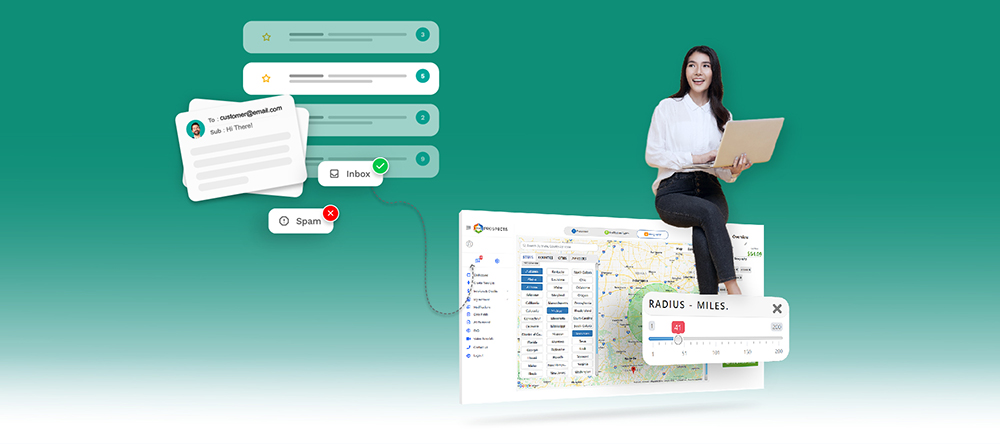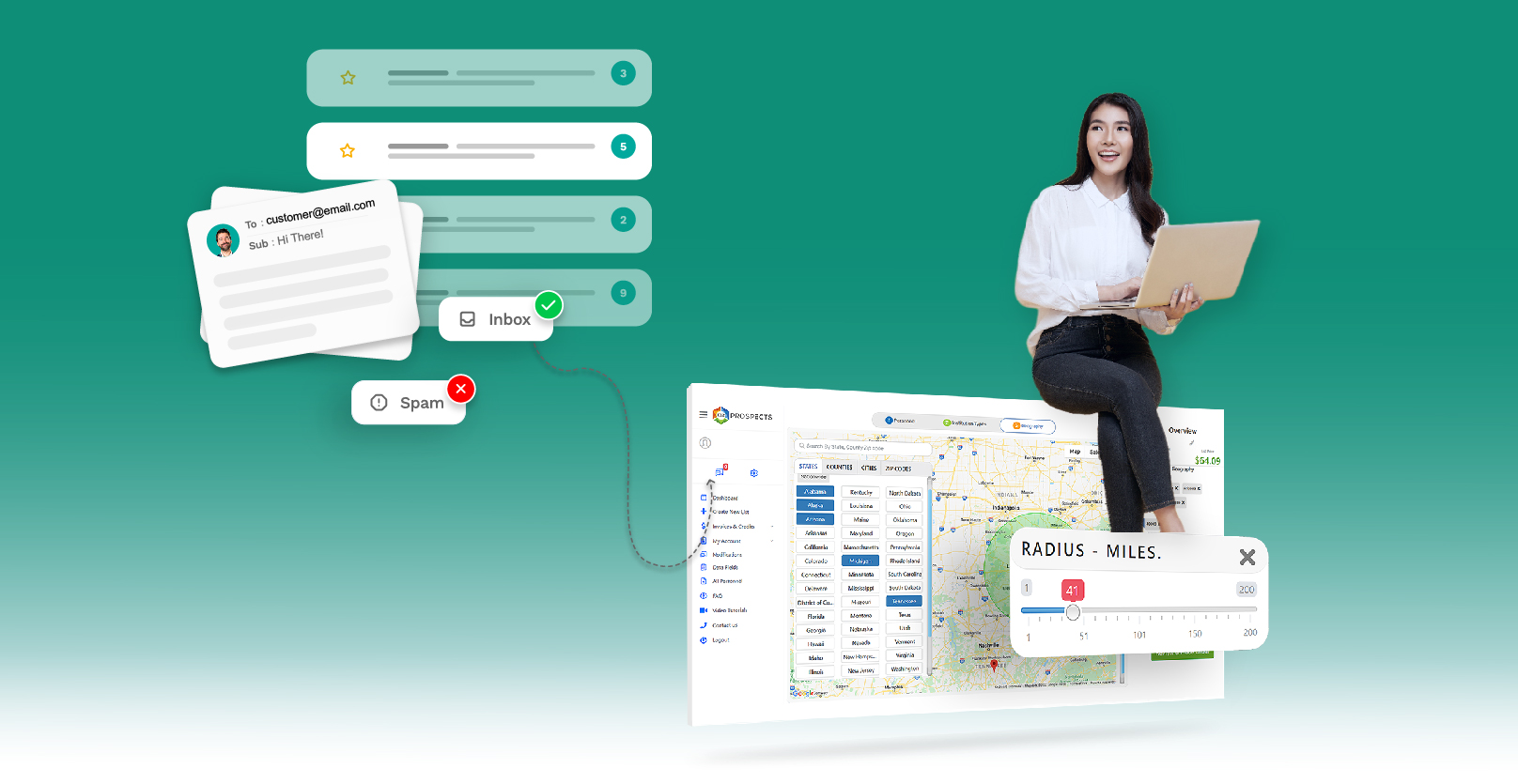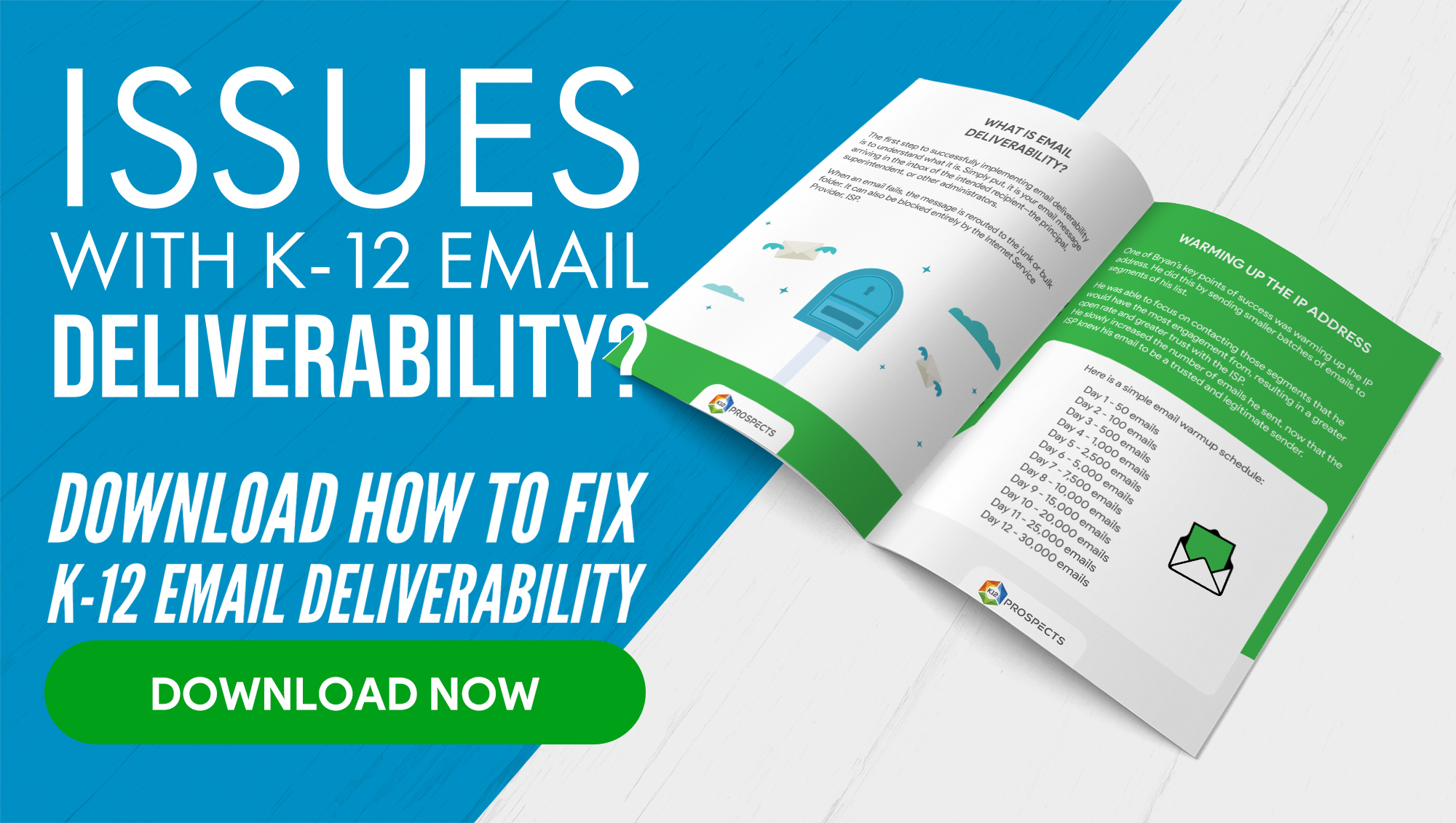What Email Deliverability Is and How to Improve It Using K12Prospects

Have you ever tried sending someone an email, and the person reports that they never found it? You should have, at least on one or two occasions. When that happens, you could have either resent the email or asked them to check their spam or junk folder. There is always a good chance that they would find it in this folder if you are sure you sent it to the right address.
The question now is: how did it end up there?
If you look at your spam folder, you should find a series of emails there – these are emails you thought should have been in your inbox. And the thing is that every email you send should end up in a deliverability folder after they are delivered. But if they don’t, you should learn how to find email deliverability and improve it. In this guide, we’ll show you how to do this using K12Prospects.
What Is the Difference Between Email Deliverability and Email Delivery?
Generally, people confuse email deliverability with email delivery because they sound almost the same. Surprisingly, they are not. They are two different concepts of email communication. See below for Email Deliverability vs. Email Delivery.
What is Email Deliverability?
Email Deliverability is also called Inbox Placement. It involves the placement or location of an email after being delivered. It is marked by two different rates – the low and the high. If it is a high rate, the email ended up directly in a receiver’s inbox. However, if it is a low rate, it ended up in a spam folder.
What is Email Delivery?
Email delivery is the acceptance of an email by a recipient’s server. It is the least concerned about the location of storage, i.e., inbox or spam folder. As long as the email has left a sender’s server and delivered to the other side, the email delivery status is active.
Why Is Email Deliverability Essential?
You may wonder how email deliverability is important in business. First, some companies spend a huge budget on marketing; the last thing they want is a futile effort. They want to communicate with consumers (including potential ones) successfully using various channels at their disposal, particularly emails. And in turn, they hope to make good sales or have a massive return on investment.
Email deliverability makes this possible, especially where email marketing is the order of the day. You want your emails to land directly in a recipient’s inbox instead of a spam folder where it is least considered. When that happens, you are sure they have received it, and the message has been passed across successfully.
In fact, you won’t have to worry about consumers pressing the delete button because they won’t but read the email in their inbox. And by doing this, you could reach your consumers and finally have a good shot at better sales or improving your image as a brand.
What Is Email Deliverability Rate and Bounce Rate?
As you understand email deliverability, you should also do for deliverability and bounce rates. You have a good deliverability rate when it is 95%. It automatically means that consumers received all your messages in their inbox.
On the other hand, there is also the bounce rate. It is a percentage measurement of the number of emails rejected by a recipient’s server. And as these emails keep getting rejected, it affects your deliverability rate. Ultimately, a sender’s rep is put at stake.
Generally, there are two bounce rate types:
- Soft Bounce: If a recipient’s server rejects the email due to temporary problems such as full inbox or server downtime. It has the least effect on a sender’s rep.
- Hard Bounce: If a recipient’s server rejects the email due to permanent issues. It has the most effect on a sender’s rep.
How to Improve Email Deliverability Rate?
Now that you understand the impact of email deliverability rate, you can improve it by doing the following.
- Inbox Placement Testing: It finds out whether an email has been delivered and the location where it is saved on a recipient’s server.
- Blocklist Monitoring: It helps you discover whether or not your domain or IP address ended up in a blocklist on a consumer’s server. Your emails end up on a blocklist if they are flagged as spam.
- Spam Filters: It sorts out emails by providing spam scores and feedback. You can use this information to improve the quality or content of your email so that it doesn’t end up in a spam folder.
- DMARC Monitoring: It checks whether sent emails from a domain are legit or not. In short, it identifies the authenticity of an email.
How to Identify Your Email Deliverability Rate?
To identify your email deliverability rate,
- Calculate: first, calculate by dividing the number of accepted emails by the number of sent emails. You should get your inbox rate value doing this.
- Other things to do: you could also check out your domain or IP address reputation to see if you have a good deliverability rate or not. There are online websites to do that.
How Can K12Prospects Be Useful?
To improve your email marketing deliverability, using K12Prospects school data is important. It provides a list of schools and districts personnel that will improve the deliverability rate. Use the most recent data with their unlimited free list updates to generate greater ROIs in the future from email campaigns.



